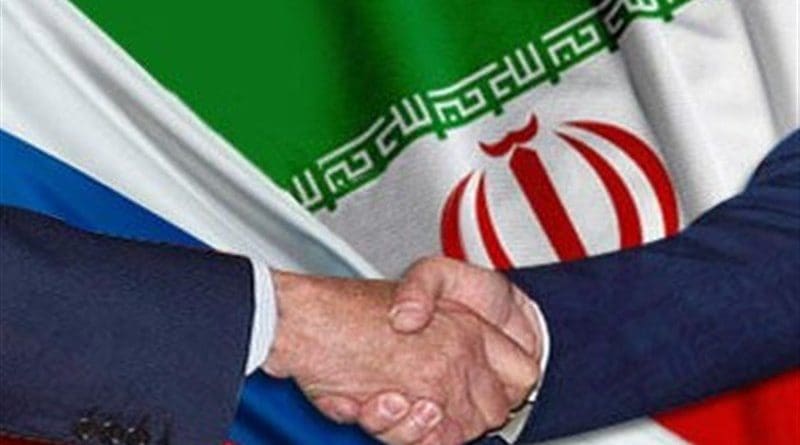Fuad Shahbazov

On November 28, Iranian state media reported that Tehran had finalized a long-awaited deal with Russia to procure Sukhoi Su-35 fighters jets, attack helicopters, and military trainer aircraft. Although some sources dubbed the announcement as another round of government speculation, Iranian Deputy Defense Minister General Mahdi Farahi confirmed the reports to semi-official news agency Tasnim (Tasnim News Agency, November 28).
For its part, the Kremlin has yet to publicly confirm the reported agreement. Over the past year, Iran has made strides in the modernization and development of its air and naval forces. Intensified cooperation with Russia has largely facilitated that progress, with both sides signing agreements to boost their trade, energy, and military ties. The recent expansion of that partnership threatens Western interests in the wider region and could pose future risks to global stability.
In the 1990s and early 2000s, Iran relied more on China than Russia for military assistance. Tehran steadily purchased Chinese-made cruise missiles to bolster its naval forces and upgraded surface warships despite the international embargo imposed on Iran (Inss.org.il, May 10, 2021; Stockholm International Peace Research Institute, accessed December 12). Later, China abstained from exporting sophisticated weaponry to Iran out of concerns over possible sanctions and an open confrontation with the United States. As a result, Iran gradually established closer strategic ties with Russia, and Moscow began assisting Tehran in acquiring modern military technology (Al Jazeera, September 20).
The Kremlin’s war against Ukraine gave fresh impetus for the expansion of the Russian-Iranian partnership. In the early months of Russia’s war against Ukraine, Moscow was struggling to achieve tangible results. Russian forces were being overwhelmed by the Ukrainian side’s more sophisticated weaponry and plagued by a lack of cheap alternatives to replace heavy losses of military equipment. Iran provided a solution in cheap loitering munitions and began supplying the Russian military with hundreds of Shahed “kamikaze” drones (Defence Express, November 8, 2022; Institute for Science and International Security, February 23). Russia has used the Shahed drones in high numbers to launch attacks on Kyiv and Ukraine’s critical infrastructure. In addition, officials on both sides have reported that a joint drone production facility is being built in Russia with Iranian financing to produce domestic versions of the Shahed-136 drones (see EDM, March 6; Radio Free Europe/Radio Liberty, November 2).
Tehran and Moscow’s partnership does not only benefit Russian military operations. Iran has been unable to produce modernized attack helicopters and fighter jets due to the inability to source the necessary technology as a consequence of stringent Western sanctions. Tehran approached Moscow for help in its military modernization efforts and as one of the only partners who could supply Iran with the desired aircraft (Insight Turkey, May 22, 2019; Times of Israel, August 26). The November agreement entails Russia delivering an unspecified number of Sukhoi Su-35 fighter jets, Mil Mi-28 attack helicopters, and Yakovlev Yak-130 jet trainers to Iran. The deal represents the first time Tehran has purchased modern fighter jets since the 1990s (Amwaj.media, June 5).
The Russian-Iranian agreement has boosted fears in the United States, Israel, and some of the Persian Gulf monarchies that Iran plans to flex its newfound military might in the wider region (Iran International, December 7). The United States and other Western countries also fear the possibility that Iran may provide Russia with more significant military assistance against Ukraine—namely, long-range air-to-surface missiles. Since the expiration of the UN Security Council ban on Iran’s export and import of long-range missiles on October 18, Tehran has declared that it is no longer restricted in developing its cruise and ballistic missile programs as well as sharing that technology with its partners. That proclamation has led some to speculate that Iran will begin sending long-range missiles to Russia in large quantities, though overt evidence of that remains to be seen (Iran International, October 22, 2022; Radio Free Europe/Radio Liberty, November 2; see EDM, November 30).
Israel has expressed concerns regarding Russia’s plans to assist Iran in modernizing its defense industry. Tel Aviv sees the current war with Hamas as part of Tehran’s broader hybrid proxy war against Israel (Al Jazeera, November 23). The November agreement with Russia may embolden Iran to become a more active party to the conflict. However, it is unlikely that Russia will openly encourage Iran to use the new fighter jets and attack helicopters against Israel or allow Tehran to hand them over to its Hezbollah and Hamas proxies.
The new defense deal, if successfully carried out, will pave the way for a more comprehensive military partnership between Moscow and Tehran. For example, the Iranian Air Force currently sits in a highly vulnerable position, comprised mainly of Cold War-era aircraft and helicopters (Al-Monitor, November 28). The Sukhoi Su-35s and Mil Mi-28 attack helicopters would represent a significant improvement in this regard. Tehran has also sought to significantly increase the country’s air-to-air and air-to-ground capabilities and will likely seek additional military support from Russia in achieving that goal. Regarding the international ban on Iranian arms imports and exports, Moscow declared that it, too, was no longer legally obligated to adhere to such restrictions and welcomed more cooperation with its Iranian partners (Iran International, October 22, 2022; Ministry of Foreign Affairs of the Russian Federation, October 17).
Expanded defense cooperation between Russia and Iran will likely extend beyond fighter jets and helicopters. It will open the path for increased Iranian exports of long-range missiles and more sophisticated drone technology to Russia. Moscow, in turn, will presumably provide Tehran with additional technical assistance in modernizing the Iranian military’s capabilities. Such prospects could undergird a renewed Russian offensive against Ukraine in 2024 to conquer more territory and push Kyiv to the negotiating table. They could also encourage Iran to take a more active military role in the Middle East, which could further destabilize the region.
No comments:
Post a Comment